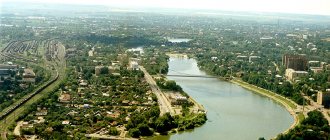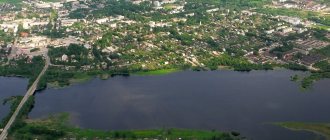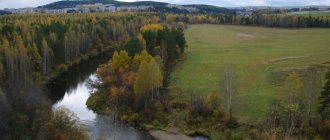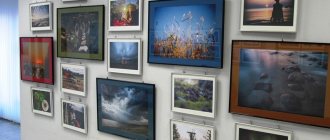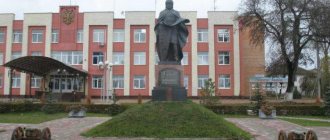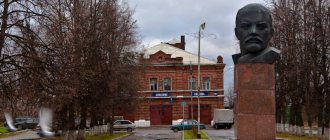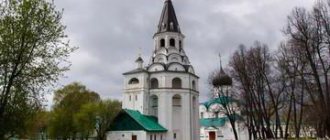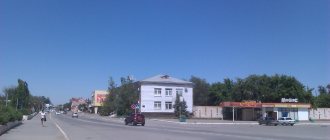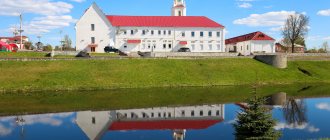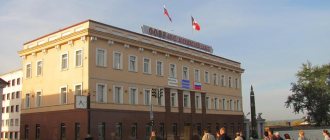History of the city of Gatchina
Historical documents from 1550 indicate that on the site of the modern city there was a settlement called Khotchino. The name comes from one version, which says that on this territory there was a cult place of the pagan goddess Khochena - the goddess of desire. In the middle of the 17th century, the blank letter “X” was replaced by the letter “G”.
According to another version, the name “Gatchina” comes from the words “gat” (a road built through a marshy place) and “khatsha” (an area where the forest was burned for arable land). For several centuries, Russia and Sweden laid claim to these lands.
In 1617, a treaty (Stolbovo Peace Treaty) was signed in the village of Stolbovo between the Russian Tsar Mikhail Fedorovich Romanov (the first Tsar of the Romanov dynasty) and the Swedish King Gustav II, and the territory became part of the Kingdom of Sweden.
85 years later, during the Northern War for the possession of the Baltic lands, Gatchina began to belong to the Russian Empire. In 1765, the territory of Gatchina was donated by Catherine II to Count G. Orlov.
After his death, his estate and the surrounding territory began to belong to the son of Peter III and the future Russian Emperor, Grand Duke Pavel Petrovich, who in 1796 awarded Gatchina the status of a city.
After some time, the city officially became the center of the Gatchina district. After the death of Paul I from 1801 to 1917. The owners of the territory of Gatchina were the wife of the emperor Maria Feodorovna (princess of the House of Württemberg), the Russian emperors Nicholas I, Alexander II, Alexander III.
During this period, the St. Petersburg-Gatchina railway connection was established (1853), and 28 years later the first electric street lighting in Russia appeared.
In 1910, the first airfield was built from which the founder of aerobatics, Pyotr Nesterov, flew, who in 1914 used the first ram in the history of aviation in the vicinity of the city of Zhovkva (now the city of Nesterov).
The city of Gatchina was renamed several times: Trotsk, Krasnogvardeysk, Lindemanstadt (during the occupation by German troops). In 1944 its historical name was returned. The city of Gatchina (45 km from St. Petersburg) is a modern regional center occupying an area of more than 28 km².
Thanks to the cultural monuments preserved and restored after the Second World War, the settlement attracts tourists from many European countries. The most popular sites, which are inextricably linked with the history of Russia, are included in walking tours organized by the excursion bureau.
Gatchina Palace
On Krasnoarmeysky Prospekt is the main attraction of the city of Gatchina, Leningrad Region - the Imperial Palace.
In 1765, Catherine II donated the lands of Gatchina to her close general-feldzeichmeister (the rank of chief artillery chief) Count Grigory Orlov in gratitude for his faithful service. A year later, construction of the complex began on the shore of the lake. Several dozen faceted towers and a unique 120-meter-long underground tunnel to the Silver Lake gave the palace the appearance of an English castle from the Middle Ages. After Orlov's death, in 1883, the complex became the residence of Emperor Paul I.
On his instructions, the Italian architect Vincenzo Brenna is rebuilding the building. In front of the palace, according to the Italian's plan, a canal is dug through which four bridges with cast-iron gratings are erected.
In 1845, the building was rebuilt again under Emperor Nicholas I.
An imperial church was built. At the same time, a new grand staircase was erected in the main central building for noble guests and members of the imperial family. Under Alexander III, the palace complex was electrified and telephone communications were installed.
Since 1918, the Gatchina Palace has been converted into a museum. It contained exhibits of palace decoration and life of the 19th century. During the Second World War the palace was partially destroyed.
Since 1950, the palace building has housed the Naval School, and after some time - the Electronstandart Research Institute.
Since 1960, restoration work began to restore the former interior of the premises. They continued for 15 years. Now tourists can see the completely restored marble dining room, the ceremonial bedchambers of the monarch and his family members, the underground tunnel and many other rooms of the imperial palace.
Walk and route around Gatchina
We lived on Gorky Street, around the hotel there were beautiful wooden houses, and even well-kept ones.
Wooden houses in Gatchina
In Gatchina you want to photograph almost every house.
Architecture of Gatchina
Somewhere there is an attractive ornament above the arch and an interesting combination of stone and wood trim.
Stone houses of Gatchina
On the other side of the road an Art Nouveau style house appeared.
Gatchina Art Nouveau
As you can see, in Gatchina they like to rename streets.
Streets of Gatchina
New Year is coming soon, it is clear that residents have already started purchasing traditional treats.
Windows of Gatchina
Behind another masterpiece of Russian masters one can see the Intercession Cathedral.
Gatchina
This is how we saw him the night before.
Intercession Cathedral
There are also more classical buildings in Gatchina.
Classicism
And this is the pedestrian Cathedral Street, where people come to walk with their children, dine and shop.
Pedestrian street of Gatchina
The second majestic cathedral that we discovered in the city is Pavlovsky. It stands on Cathedral Square, into which the pedestrian street ends.
Gatchina
After a walk to the Cathedral, we return, warm up with hot coffee at the Bush and aimlessly turn the corner.
Streets of Gatchina
These are the architectural masterpieces you can see in Gatchina.
Sights of Gatchina
I wanted to visit the Shcherbov estate, a photo of which I came across on the Internet. I didn’t know who Shcherbov was, but the building of his house in the Northern Art Nouveau style was impressive, so we went in search of him. At the same time, we will learn about the person who built such a house. We return to the Cathedral and walk through the “sleeping” part of the city.
Pavlovsk Cathedral
For about 15 minutes we walked through ordinary courtyards near the Khrushchev buildings; we did not encounter anything remarkable. In front of the estate they discovered an impressive eclecticism - and they didn’t demolish it or burn it down!
A strange combination in Gatchina
And here is the same Shcherbov estate, I have never seen anything like it. As a resident of the central region, this architecture impresses me.
Shcherbov's estate
We learned that Shcherbov was a cartoonist, here is a reproduction of one of his works.
Caricature of Shcherbov
There are quite a few exhibits inside and, as the guide said, the museum will soon be closed for a long time for restoration. So we arrived on time.
Interior of the Shcherbov estate
The first time we visited only the palace in Gatchina, so this time we decided to go to the park. We walked through the snowdrifts for a long time until we saw the palace. Entrance to the park, at least in winter, is free, but all entrances are equipped with turnstiles, so you may have to pay for entry during the season.
Palace Gatchina
Map of Gatchina Park
In winter, everything looks monochrome, although this has its own charm.
Gatchina Park
Hungry ducks eat whatever is given to them. Although I’m not sure that they should be fed bread, as many did.
Winter in Gatchina Park
I think the park will be more impressive if you come here in the summer, so we walked along the main paths and went to look for an exit from some other side. Somehow we got out successfully and after a couple of minutes we found ourselves again near the pedestrian street. Gatchina is quite compact, everything can be reached on foot.
Gatchina Park
Towards evening we went in search of the Priory Palace, which, judging by the map, is located a few minutes' walk from our hotel. While we’re walking, I’m photographing the houses I like again, here’s another representative of modernism.
Architecture of Gatchina
And here is the Priory Palace. There were a lot of people around, but they were interested in the surrounding natural landscape, which under a layer of fresh snow had turned into slides.
Priory Palace
We were alone in the museum, except for the caretakers. I downloaded a guide to the palace from IZI Travel in advance and listened to the tour through my headphones, but you can also pick up an audio guide at the ticket office. I plan to make a separate post about the palace, so now I will only show a few photos. This is the palace tower without decoration, you can’t go down it, it’s behind glass.
Priory Castle
The Priory Palace was built using a unique technology, from local soil. Its architect was Lvov, who is familiar to me from various projects in the Tver region.
Architect Lviv
Here is a sample of this very land.
Priory Castle Grounds
In addition to the unusual construction technology, the palace is famous for the fact that Paul I built it for the Order of Malta, but this story requires a separate story.
We managed to see all these sights in a day, and if you haven’t been to the Gatchina Palace, then it’s worth adding at least another half a day.
Terrace-pier
The Gatchina palace complex is located surrounded by a palace park, in which one of the main structures is the Big Terrace on the Long Island (the conventional name for a group of islands connected by bridges).
The court architect Vincenzo Brenna began its construction in 1772. The terrace was then used as a pier for the Gatchina flotilla. The structure was a multi-ton platform 52 meters long along the shore of Silver Lake. During the Second World War, the pier was heavily damaged.
The terrace railing, which was decorated with marble vases and sculptures of art goddesses, was destroyed.
Now, despite the absence of these decoration elements, the pier attracts tourists as a vacation spot on the territory of the Gatchina State Nature Reserve.
Priory Castle. Reviews from tourists
Not far from the imperial castle is the Priory Castle, surrounded by the trees of an ancient park. The peculiarity of this building is that it was built using a special technology. The building material is compressed earthen soil mixed with lime mortar (earthen).
After the revolution (1789-1799), the French prince Condé, who had lost his rights to the property of his lands, turned to Paul I for help, and the Russian emperor granted political asylum to Condé and members of his royal family.
In 1799, in Gatchina, on the shores of the Black Lake, a small monastery was erected under the leadership and design of the architect N. Lvov (Priory Castle). It was the residence of the prince and for 10 years was considered the property of the Order of Malta created in Russia.
After the death of the emperor, the castle was transferred to state use. At various times it was used as barracks, a hospital and other institutions. During the Second World War the building was almost undamaged.
After the end of hostilities, 35 years later, restoration work began to restore the previous interior. Now it is used as a branch of the historical museum.
Visitors to the city love this small castle. You can come by car and use the “yards” to get to the building. Guests note that a ticket to visit is inexpensive, it costs 180 rubles. This price also includes an audio guide. Tourists also note some disadvantages: an uncomfortable toilet and lack of a cafe.
Where to go for a tourist in Gatchina: interesting places
Where can a traveler go for fun in a small town? You won't be bored. Although there are few entertainment and places for shopping in the city, there is always something for a tourist to see in Gatchina.
Park "Zverinets"
Created 250 years ago, the object was home to many animals: bears, wolves, fallow deer, deer, wild boars, birds. Thousands of linden trees decorated the park, and an artificial lake was crossed by bridges, connecting it with islands of greenery. Now these memorable places are visited by tourists with pleasure for walking and studying picturesque examples of landscape art of past centuries.
Location: st. Red Road, 1.
Opening hours: daily, 6.00-22.00.
You can get there by buses 8, 29 to the Internat stop.
Get directions
Shopping center "Megapolis"
The shopping and entertainment center is considered the best class “A” trading platform in the Leningrad region and the center of trade in Gatchina. The superstore area covers 10,000 square meters. m. In addition to clothing boutiques and hardware stores, there are jewelry stores, pharmacies, agencies, and places where you should go with your family: food courts, a cinema, and gaming entertainment for adults and children.
Address: 25 October Avenue, 42.
Opening hours: every day, 11.00-19.00.
Travel by bus 21 to the “Vezd” stop.
Get directions
Crafts stall
The only artisan shop in the Leningrad region. They do not sell Chinese counterfeits. Everything that is sold here is handmade by Russian craftsmen: from artists to blacksmiths. Tourists can buy gifts and souvenirs for their souls and friends. The range is impressive.
Address: Krasnoarmeysky prospect, 1.
Opening hours: every day, 11.00-18.00.
Travel by buses 3, 7, 518 to the Gatchina Palace stop.
Get directions
Restaurant "Ingerburgsky"
A rare restaurant that has its own brewery and zoo. The fish in the pond are calming and create a pleasant atmosphere. The menu consists of German dishes. Beer in bottles with branded labels can be taken with you. Guests of the establishment assure that it is excellent here.
Address: 7th Army Street, 22.
Opening hours: daily, 11.00-01.00.
Travel by bus 22 to the Sobornaya stop.
Get directions
Musical buffet SOUL
The symbiosis of culture and delicious farm food is a real oasis of pleasant relaxation. The barista will brew aromatic freshly roasted coffee, and the performance of musicians will awaken the soul. Jazz, soul, funk are listened to here only on vinyl!
Address: Pushkinskoe highway, 13 building 3.
Opening hours: daily, 09.00-23.00.
Travel by bus 27 to the Ingerburg Gate stop.
Get directions
Family entertaining
Large park for family active recreation. Area 700 sq. m contains a labyrinth, a jumping pit, a climbing wall, a tubing slide, trampolines, carousels, air hockey, air cannons and slides. There will be entertainment for both adults and children. Experienced animators work for free.
Address: Pushkinskoe highway, 15.
Opening hours: daily, 10.00-21:00.
Travel by bus 21 to the Cubus shopping center stop.
Get directions
Artist's shop
The store-gallery sells works by local artists. The colorful landscapes of Gatchina and portraits of famous historical figures are purchased by most tourists. Here you can buy art supplies and souvenirs at an affordable price.
Address: Chkalova street, 79.
Opening hours: every day, 10.00-19.00.
You can get there by bus 21 to the Musical School stop.
Get directions
City Museum
The museum has collected exhibits telling about the formation of the city from the pre-Petrine era to modern times. The halls contain the most interesting household items, clothing, mechanisms and equipment of those times. Museum guides conduct walking tours of the historical places of Gatchina.
Address: 25 October Avenue, 18.
Opening hours: daily, except Tuesdays, 10.00-18.00.
You can get there by buses 3, 4, 7, 8, 22 to the Spartak Stadium stop.
Get directions
Estate-Museum of P. Shcherbov
The old museum is located in the two-hundred-year-old estate of the artist Shcherbov himself, built by the famous architect Krichinsky in the spirit of northern modernism. The original building with its turret and portals is completely asymmetrical, which gives it great originality. The inside of the museum is even more interesting: a stone fireplace, antique furniture, an oak staircase. The walls are crowned with famous works by the original artist.
Address: Chekhov street, 4.
Opening hours: daily, 10.00-17:00.
Travel by bus 7 to the “Lieutenant Schmidt Street” stop.
Get directions
Aviation Engine Museum
The museum is located in a century-old mansion, which was previously owned by the lancers of the Guards Regiment. The exhibition halls spread over 800 square meters. m and display 15 complete copies of aircraft engines. An experienced guide will tell you about the history of aircraft engine construction.
Address: Grigorina street, 7A.
Opening hours: Wednesday-Sunday, 10.00-16.00.
Travel by bus 28, 518 to the Baltic Station stop.
Get directions
Museum "Nanny House of A. S. Pushkin"
A museum created specifically for the sake of a serf woman - nanny A.S. Pushkin. The ancient 300-year-old wooden house has retained the charm of a simple peasant hut. Everything in it remains as it was under Arina Rodionovna: a chopped cradle hanging on rings, a spinning wheel, icons, wooden kitchen utensils and an untouched Russian stove. A camping bag made of hard cloth is a museum relic, a personal item of the poet’s nanny.
Address: Kobrino street, 27.
Opening hours: all days except Tuesday, 10.00-16.00.
You can get there by buses 534, 151, stop “Kobrino”.
Get directions
Theater "Around the Corner"
The theater began as an amateur club 84 years ago. Now “Around the Corner” is a permanent participant in the cultural life of the region. The repertoire is based on world classical works. Children love to watch modern productions: “Pippi Longstocking”, “Aibolit”, etc.
Address: 25 October Avenue, 1.
Opening hours: daily, 13.00-19.45.
Take bus 21 to the Musical School stop.
Get directions
Exhibition “Art Collections of the Gatchina Palace”
The exhibition is housed in 12 spacious halls and is permanent. Valuable works by European masters of the 17th-18th centuries are presented: Giordano, Silvestre, Forte, Courtois Bourguignon. The main attraction of the collection is the painting “Expulsion from Paradise”, painted by Luca Giordano. In addition to paintings, the museum has a rich fund of furniture, dishes, unique books, and porcelain.
Address: Krasnoarmeysky prospect, 1.
Opening hours: daily, 10.00-18.00.
You can get there by bus 543 to the “Palace” stop.
Get directions
Gatchina Museum-Reserve
An unusual museum-reserve - a mixture of the styles of the Hermitage and Hamlet's castle. The palace, part of the ensemble, served as the residence of the royal family and has gone through more than one restoration. The territory includes a garden, a signal tower, buildings for hunting and recreation. These are places worth visiting. Concerts, festivals and costume balls are held in luxurious halls, the hosts of which are the impromptu Paul I and his wife Maria Feodorovna.
Address: Krasnoarmeysky prospect, 1.
Opening hours: daily, 10.00-18.00.
Travel by bus 543 to the “Palace” stop.
Get directions
Every year thousands of foreign and Russian tourists visit Gatchina. Many tourist places can be visited in 1-2 days. Summer and golden autumn are the right time to travel to the historical places of the old city.
Cathedral of the Intercession of the Blessed Virgin Mary. Tourists' opinions
What interesting attractions are there in the city of Gatchina? In the historical part of the city on the street. “Red” is a temple building that attracts tourists with its grandeur - the Cathedral of the Intercession of the Blessed Virgin Mary.
The construction of the temple, which is located on the territory of the Pyatigorsk women’s monastery (the name is derived from the nearby “Fifth Mountain” estate), dates back to 1885. The cathedral was erected at the expense of the Gatchina merchant Kuzma Karpov according to the design of the chief architect of Gatchina L. Kharlamov.
The church, in the construction of which the monastery nuns took part, was built in a purely Russian style, and in 1914 it was consecrated in the name of the Intercession of the Most Holy Theotokos. In those days, the cathedral was considered the largest religious building on the territory of the St. Petersburg province.
In 1930, the convent was closed, and the cathedral building was used as city warehouses. In 1990, the church became the property of the Gatchina diocese; after restoration work, daily liturgies have been held here since 1991.
Tourists who have been here advise everyone to visit this place. As guests of the city say, the territory of the cathedral, as well as inside it, is very beautiful. Many who visited the temple found peace and tranquility after visiting.
Museum "Nanny House of A. S. Pushkin"
Address: Leningrad region, Gatchina district, Kobrino village, 27 Telephone: (813-71) 58-510 Website: https://www.museum.ru/M270 Opening hours: from 10.00 to 16.00, except Monday, Tuesday Cost : Without excursion: adults – 50 rubles, schoolchildren – 30 rubles. With excursion: adults – 130 rubles, schoolchildren – 70 rubles. How to get there: from Warsaw railway station in Gatchina by bus No. 534, No. 151.
The only museum in the world created in memory of a serf woman is located in a wooden house with more than 200 years of history. During the restoration, only the roof and floor were replaced.
All museum exhibits, which give an idea of what a peasant hut of the 18th century looked like, were donated by Kobrin residents and admirers of Pushkin. Here you can see a rolling pin and a ruble, spinning wheels, icons, and a hanging cradle. There is only one relic - a bag-bag made of homespun fabric, belonging to Pushkin's nanny. Opposite the museum there is a café called Nanny's.
Submarine monument
Tourists, heading to the Gatchina Palace from the Baltic Station, pay attention to an unusual structure - a monument to a submarine, which was opened in 2006.
In 1873, Polish inventor Stefan Drzewiecki was invited to Russia. In 1876, he created the first model of a submarine, which was tested two years later in Odessa.
The second example was provided to Tsarevich Alexander (future Russian Emperor Alexander III) in 1880 on Silver Lake in Gatchina.
The submarine sailed several times under the boat on which the emperor was. Then the inventor placed a mine under the raft that had been prepared by this time, surfaced not far from the imperial pier and blew it up.
Gatchina is the site of testing the second model of the boat, which became the world's first serial warship capable of diving and operating underwater (submarine). After some time, the emperor gave instructions for the construction of 50 submarines. They successfully carried out combat missions in Sevastopol and Kronstadt. The monument is an exact copy of the second model of Drzewiecki's invention, made of stainless steel and mounted on a pedestal.
Museum of the History of Aviation Engine Building and Repair
Address: st. Grigorina, 7a Phone: (8-81371) 2-54-58 Website: https://www.museum.ru/m3031 Opening hours: 11.00-16.00 on Friday, Saturday and Sunday. Pre-arrangement required Cost: free
The museum is located on the territory of the 218 aircraft repair plant (opposite the Gatchina Palace) and occupies an area of 800 square meters. meters.
The main exhibits of the museum are full-scale models of turbojet, aviation, turboprop, turboshaft engines, made according to the prototype of real ones, decommissioned by some design bureau. Next to the engines are small models of the aircraft on which they were once installed.
In addition to models, in the museum you can learn the history of aircraft, interesting facts about aircraft and engine designers, and the repair plant itself.
How to get to Gatchina?
Where is the city of Gatchina? The settlement is located 45 km southwest of St. Petersburg near the Izhora River. How to get to the city?
Tourists can get to Gatchina by several routes:
- You can use bus route No. Kt8, Kt8A from Moskovskaya Square (Moskovskaya metro station) travel time is 40-45 minutes.
- By minibus (metro station "Prospect Veterans") No. K 631. Travel time - 60 minutes.
- By train from the Baltic station.
- The most convenient way to get there by private car is along the Kievskoye or Krasnoselskoye highways.
